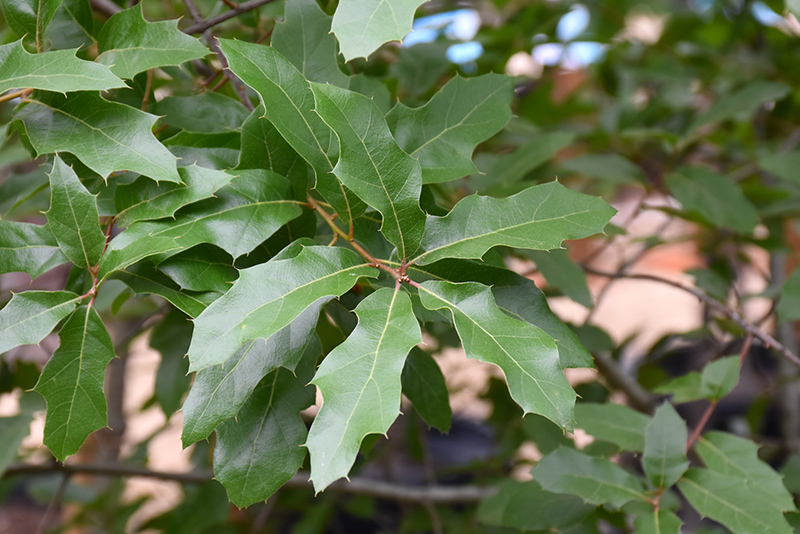Height: 50 feet
Spread: 50 feet
Sunlight:
![]()
Hardiness Zone: 5b
Other Names: Chisos Oak, Sierra Oak, Graceful Oak
Description:
A mid-sized oak that is evergreen in warmer climates, but will drop leaves in single digit temperatures; proven to be very drought and alkaline tolerant; pyramidal when young, but rounded and open at maturity; a stunning landscape accent
Ornamental Features
Canby Oak has attractive dark green evergreen foliage which emerges red in spring on a tree with a round habit of growth. The glossy pointy leaves are highly ornamental and remain dark green throughout the winter. However, the fruit can be messy in the landscape and may require occasional clean-up. The furrowed gray bark adds an interesting dimension to the landscape.
Landscape Attributes
Canby Oak is a dense evergreen tree with a more or less rounded form. Its average texture blends into the landscape, but can be balanced by one or two finer or coarser trees or shrubs for an effective composition.
This tree will require occasional maintenance and upkeep, and is best pruned in late winter once the threat of extreme cold has passed. It is a good choice for attracting squirrels to your yard. Gardeners should be aware of the following characteristic(s) that may warrant special consideration;
- Messy
Canby Oak is recommended for the following landscape applications;
- Accent
- Shade
Planting & Growing
Canby Oak will grow to be about 50 feet tall at maturity, with a spread of 50 feet. It has a high canopy with a typical clearance of 6 feet from the ground, and should not be planted underneath power lines. As it matures, the lower branches of this tree can be strategically removed to create a high enough canopy to support unobstructed human traffic underneath. It grows at a slow rate, and under ideal conditions can be expected to live to a ripe old age of 300 years or more; think of this as a heritage tree for future generations!
This tree should only be grown in full sunlight. It is very adaptable to both dry and moist locations, and should do just fine under average home landscape conditions. It may require supplemental watering during periods of drought or extended heat. It is not particular as to soil type, but has a definite preference for acidic soils. It is highly tolerant of urban pollution and will even thrive in inner city environments. This species is native to parts of North America.

